What is Technical Bid Evaluation(TBE)?
Technical Bid Evaluation or TBE is the organized evaluation and examination process of the vendor’s technical bid documents or proposals from the technical requirement point of view. For all items, a Material Requisition (MR) document is prepared and sent to several vendors stating the requirements for any item on a specific project. Based on availability and experience different Vendors provide their bids or offers. All these offers need to be reviewed before selecting the final vendor. So, Technical Bid Evaluation(TBE) or Vendor Offer Review is an important step before final procurement. This article will provide a sample guide on the general activities to be carried out during Vendor offer review, TBE (Technical Bid Evaluation) & Vendor drawing Review:
The Technical Bid Evaluation basically assesses the technical capability along with the quality, compliance with codes, standards & specifications, experience, operating cost, and performance penalties to meet the project-specific requirement as well as execution capability.
Guide for Vendor Offer Review
The following points are to be checked during the Vendor Offer Review of any item.
- Offer to be reviewed with respect to Material Requisition.
- The vendor should be listed in the list of Approved Vendors by the Client.
- The manufacturer location shall be as per the Approved Vendor List.
- Scope & Interface clarity is to be checked.
- Vendor to stamp and comply with MR (Material Requisition), Specification & Table of compliance
- Technical queries preparation.
- Check whether the vendor is taking any Deviation with respect to MR.
- Ensure that the Vendor shall comply with all in-house Specifications, Guidelines, Procedures, Work Instructions, and International Code & Standard requirements.
- Design Change to be covered as part of TQ (Technical Queries).
- Response to Vendor TQ clarification.
- Vendor Clarification Meeting, if required.
- Close all Technical Queries (TQs) & clarifications.
Guide for Technical Bid Evaluation
While performing technical bid evaluation (TBE), the following points are to be considered.
- Compile all vendor offers into one document (excel sheet or some other document).
- List down all the requirements of MR& Specifications.
- Attach all the Technical Queries, Justification letters, Deviation & Clarification lists.
- All vendor deviations are to be approved by the Client.
- Delivery time to be mentioned.
- Technical Acceptance or Rejection against each vendor is to be mentioned.
- Issue TBE for Client Comments & Approval
- TBE (Approved for Purchase) is to be issued to procurement for Commercial Acceptance.
- After finalization of the Vendor, Purchase Specifications are to be issued to a particular vendor
Guide for Vendor Drawing Review
The following points are to be kept in mind while Reviewing the vendor drawings
- Vendor drawing to be reviewed with respect to Purchase Specifications.
- Any design change at this stage will be an additional activity for the Vendor which may incur an additional cost.
- Drawings are to be reviewed based on technical requirements and to be commented on accordingly.
- Normally each organization has its own checklists for vendor drawing review and those are to be followed with close attention to avoid any major mistakes.
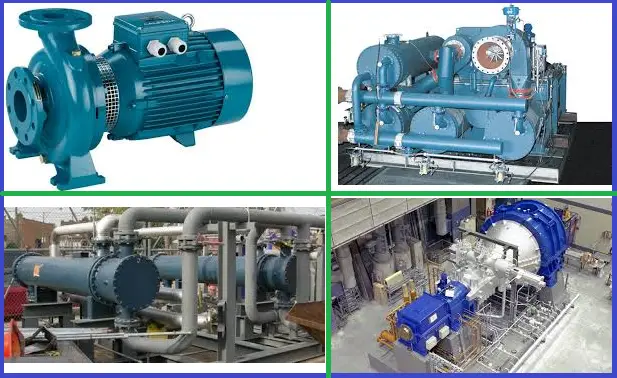
Types of Equipment, Packages & Piping Components that are normally reviewed
Static Equipment for Technical Bid Evaluation
Important static equipment for technical bid evaluation is
- Storage Tanks
- Heat Exchanger / Air Cooler
- Knock-out drum
- Vessels
- Columns
- Heaters
- Reactors
- Filters
Rotating Equipment for TBE
Technical bid evaluation is performed in the following rotary equipment in a process plant
- Gas turbines.
- Steam turbines.
- Centrifugal Pumps.
- Positive displacement pumps.
- Centrifugal Compressors.
- Fans & Blowers
Packages for Technical Bid Evaluation
Important package items used in the oil & gas industry for the technical bid evaluation process are
- Compressor package
- Flare package
- WTP package
- Separator package
- Chemical Injection Skids
- FMS
Mechanical (Static & Rotating) discipline will be the Lead for Vendor offer review, Technical Bid Evaluation & Vendor drawing review for Static / Rotating equipment & Packages.
Piping will provide inputs to mechanical.
Technical Bid Evaluation for Piping Components
The main piping items used for technical bid evaluation are
- Pipe, fittings, flanges, gaskets & bolts/nuts
- Valves (Gate, Globe, Ball, Butterfly, Check, Needle, Relief valve, etc,.)
- Strainers (Bucket, Tee, Y-type strainer, etc.,)
- Steam / Drain Traps
- Couplings
- Other Special Items
Piping will be the Lead for Vendor offer review, Technical Bid Evaluation & Vendor drawing review for Manual valves, Relief valves, and Piping Specialty Items.
Technical Bid Evaluation for Valves
The following steps are followed for the TBE of valves.
- Vendor to comply with MR, mandatory requirements.
- TQ preparation
- Review of TQ response from Vendor.
- TQ-2, if any.
- Review of vendor deviation, if any.
- The vendor should comply & stamp on the table of Compliance.
- Pressure Testing requirements to be checked.
- Painting requirements are to be marked with respect to line design parameters.
- For the Full Bore valve requirement, the Valve ID is to be checked.
- Fire Safe Design requirements are to be checked for soft seated valves.
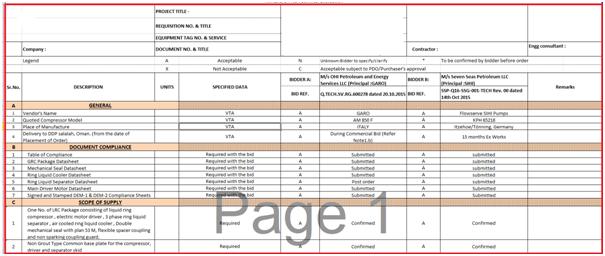
Piping Inputs to Vendor Packages for Technical Bid Evaluation
While performing the technical bid evaluation the following inputs are provided from the piping.
- Vendor to perform the engineering of interconnecting piping between all internal skids of Package.
- The vendor shall perform the stress analysis/ calculation, and other required engineering for interconnecting piping between all skids of the Package (for example GRC Package-LR Compressor, Air Cooler, Sealing, Drums, etc)
- The vendor shall provide maximum allowable forces and moments at the interface flanges.
- Vendor to provide Piping layout drawings, and Isometrics drawings for all Interconnecting piping between all skids of Package.
- The vendor shall comply with the Client/ In-house Piping Specification & Shell Standard Piping Class
- Vendor to provide Proper access / Platforms / Ladder for Maintenance and Operation of the GRC Package.
- Vendor to comply with all client requirements.
- Vendor to comply with the client Specifications, Guidelines, Procedures, Internal Codes & Standards, and requirements as stated in MR.
- Location & Available Area for the Packages
Piping Inputs to Static Equipment for Technical Bid Evaluation
TBE of Storage Tanks
- Nozzle Orientation, Staircase Orientation & Elevations.
- Allowable Nozzle forces & moments on the tanks’ shell nozzles shall be calculated as per API 650 annex. P
- Allowable nozzle load on any process nozzles on the roof shall be analyzed using the FEA method
- Pipe Support Cleat Orientation & elevations.
- Piping loads at supports taken from Tank Shell / Roof.
- Platform Access requirements for Rooftop Nozzles
- Underside elevation of the tank.
- Tank & piping Interface details
TBE of Heat Exchanger / Air Cooler / Vessels
- Nozzle forces & moments
- Piping Interface details
- Sliding support requirements in case of Tube heat exchanger
- Nozzle location & elevations.
- Vendor to comply with the Nozzle Minimum forces & moments as per proper standards
- Pipe Support Cleat Orientation & elevations.
- Piping loads at supports taken from Equipment Shell / Roof.
- Platform Access requirements for top Nozzles
Piping Inputs to Rotating Equipment
Technical Bid Evaluation for Centrifugal Pumps
The following guideline should be satisfied during technical bid evaluation for centrifugal pump selection:
The offered model should be proven and should have been operating satisfactorily for a minimum of 1 year in at least one installation.
The pump should not be selected in case the difference between NPSHA is less than 0.5 meters. NPSH testing must be asked whether the liquid is at/or near its boiling point, the liquid is gas saturated, or wherever NPSHA is less than 3 m.
Pump performance must be corrected for viscous fluids; the performance correction factor given by the vendor should be checked with respect to hydraulic institute standards. An equivalent parameter for water must be mentioned on the datasheet.
In case a low-speed pump is required, a higher-speed pump should not be accepted unless substantiated with plausible technical reasons and operating experience for a similar application.
The pumps required for parallel should have a minimum of 10-20% higher shut-off head than the operating head.
Pump with flat and drooping characteristics towards shut-off should not be selected for parallel operation.
In the case of a single pump operation, the pump minimum flow shall be greater than the flow corresponding to the differential head coinciding with the shut-off head in the drooping characteristics.
In the case of any indigenous pump vendors offering the pump with an inducer, his experience, and technical backup should be checked.
Double volute pumps will be preferred for high-capacity pumps (more than 250 m3/hr) and specifically for applications where continuous part-load operation is envisaged.
Impeller type should conform to that specified in the datasheet, generally open impellers will be preferred for liquid with suspended solids.
Non-standard flanges i,e 1-1/4’’, 2-1/2’’,5’’,7’’, and 9’’ should be provided with companion flanges by the vendor with nuts, bolts, and gaskets.
In the case of large water pumps, suction-specific speed should be calculated at the BEP of the maximum diameter of the impeller. Generally, this should be below 12,000 (US units). Pumps with suction-specific speeds above 12,000 with inducers are only acceptable.
Sundyne pumps with higher specific speeds are acceptable. The vendor should be asked for a reference list for higher specific suction speed pumps. In case the vendor has provided pumps with satisfactory results even with suction specific speed >12000, pumps should be accepted with at least 20% minimum continuous flow of BEP flow.

Flushing piping generally is in SS and in the vendor’s scope of supply. Flushing piping of size less than ½’’ shall not be accepted. Piping with a screwed and threaded connection is not accepted. All the flushing plan piping shall be welded and flanged and terminated with ANSI flanges.
Spring, hardware, and secondary elastomeric of the mechanical seal should be compatible with liquid handled.
In the case of Plan 32 dilution of pumped liquid with flushing, the liquid will take place. The rate of dilution should be obtained from the vendor and should be exceeding the limit specified flow if any.
Cooling/heating fluid quantities must be obtained from vendors. In the case of jacketed pumps where casing, bearings housing, and/or stuffing boxes are required to be jacketed, it should be checked whether the vendor has supplied a pump of similar capacity in jacked construction.
Jacket design/test pressure should be specified in the inquiry.
Material of Construction:
- In the case of pumps with special metallurgy, it must be confirmed by the vendor if he has supplied an equivalent model in similar metallurgy.
- Any deviation in the material of construction should be brought to notice for acceptance or rejection.
- Hardness difference of 50 BHN should be maintained between wear rings. In the case of Austenitic steels, hard-faced wear rings should be asked for.
Heavy-duty base plates wherever absolutely necessary should be taken for pumps conforming to API 610 requirements.
Wherever pumps are expected to start on open discharge valve, motor KW selection shall be as per end of curve KW required. Also, GD2 value starting torque and speed-torque characteristics of the pumps should be asked for all motors rating of pumps starting to open discharge.
Inspection and testing, documentation requirements should be checked according to project specification.
The technical recommendations should be clear and without any open points. Reasons for acceptability/non-acceptability should be clearly indicated.
In the case of vertical pumps, the vertical pumps the installation length of pumps to be asked.
Design and engineering for Interconnecting piping between Fluid Coupling, Flushing Plan, Seal Plan, and Cooler.
Piping Interface flange connections shall be as per ASME B16.5. Confirm nozzle allowable loads shall be 2 times the loads as indicated in Table 5 “External nozzle forces and moments” of API 610.
Technical Bid Evaluation for Metering Pump
These pumps are generally used as dosing pumps. The following major points should be checked while evaluating the offer and making a technical recommendation:
The offer should be not be accepted if the model offered is not developed by the vendor and it is not in operation in at least one installation.
The pumps type i.e. plunger or diaphragm (single, double, sandwich) should be checked as per technical specification. For diaphragm pumps, the vendor should include a diaphragm failure detection device in his scope for double diaphragm pumps.
For very low flow applications (<10 lph), electronic type diaphragm pumps are acceptable. In such cases, motor to be included in vendor scope.
The turndown ratio should be checked. Generally, below 10% rundown, the dosing accuracy of pumps will not be as per API specified limits.
Plunger/piston details such as plunger diameter, stroke length, and strokes per minute should be checked. It should be ensured that the rated capacity furnished by the vendor is correct and matches the quoted volumetric efficiency.
For packed plunger pumps, it is recommended to have strokes per minute less than 100, from a wear and tear point of view. Also, the plunger shall be hardened and the average linear speed at the maximum capacity shall not exceed 1.4 m/s.
Variable-capacity adjustment method shall be checked as per technical specification. If a remote operation is required, the details of the servomotor pneumatic positioned and the operating scheme shall be furnished by the vendor. Instruments groups should be consulted for these schemes.
Specific requirements such as cooling, heating shall be checked as per specification.
NPSHA is to be specified in the pump inquiry specification without considering the acceleration head (based on suction line size and length). NPSHR quoted by a vendor should include acceleration head and same is to be checked from relevant data available in the offer.
Gear and gearbox details should be checked. The gearbox service factor must be at least 1.5 for continuous operation. The manufacturer should be furnished the maximum power rating for the gear. Gears shall be reputed make. The gear ratio should be checked with respect to motor speed.
In the case of a diaphragm pump, the compatibility of diaphragm material shall be checked for suitability of process fluid.
Sandwich-type diaphragm-type pumps, if specified are to be checked for vendor’s reference.
Process side safety valve shall be externally mounted and shall have flanged connections (applies mainly for plunger type).
Externally mounted safety valves should be supplied from approved vendors only.
Technical Bid Evaluation for Centrifugal Compressor
Check deviations furnished by vendors (from specified standards) if the deviations are acceptable or not.
Performance curve should be available and should include the following information:
- Capacity at surge limit
- Capacity at the choke point
- Power versus capacity pressure versus curves.
Check that offered model is a developed model and has been working for a minimum of two years.
Check that the compressor manufacturer has guaranteed pressure at the battery limit specified in the specifications
Generally, the surge limit should be below 75% of the specified rated capacity, and the choke point must not be near the operating point. Also, check the surge limit at the minimum supply frequency of the electric motor.
Check the tip speed and Mach number for all the stages. It is preferred to have lower Mach nos. as it gives better efficiency.
Ensure that critical speeds furnished by vendors are a minimum of 30% away from the operating speed. In the case of turbine drive, any critical speed should not be close to the speed trip value of the turbine.
Bearings should be tilting pads. Hydrodynamic thrust bearings should be suitable for thrust in both directions.
Gear’s and couplings should be spacer type. Couplings and gears should be suitable for higher speed (due to an increase in frequency in case of electrical motor drive and up to trip speed for turbine drive) as required in the specification (Minimum service factor 1.4 for motors drive and 1.6 for turbine drives).
The oil system should conform to API 614 requirements, if not specified. It is generally preferred to have the same capacity as Main oil/Aux.oil/Emergency oil pumps. Oil piping downstream of filters should be SS. Oil pumps should preferably be positive displacement screw pumps.
The cooler should be a removable bundle; water through tube design, conforming to ASME Sec VIII, TEMA ‘C’, and with auto drain traps (for air coolers). Coolers tubes should be a minimum of 19″ OD, 18BWG; waterside fouling factor should be as per design basis with water velocity which should be 1.5-1.8 m/s
Heat loads and surface area available for Heat Exchangers should be obtained from vendors. The coolers should be provided with 10% excess area. The quantity of cooling water required should be checked from heat loads given by vendors.
All major rotating parts should be dynamically balanced. Balancing speed and procedure should be obtained from vendors for records and review.
Guaranteed vibrations should be within limits as per API standards.
The entire single-stage compressor should be preferably provided with inlet guide vanes. IGV is effective only at part load operations. The effect of IGV on multistage compressors is very small, hence, to compare power consumption at part loads, capacity vs. power curves should be obtained for compressors with and without guide vanes. The selection of guide vanes for multistage compressors should be based on techno-commercial considerations.
For all process compressors where leakage of a medium cannot be allowed to lead into the atmosphere, positive sealing should be provided by the vendor.
Controls and protection provided by the vendors must be as per requirements specified in datasheets.
During deciding on motor rating following points should be considered,
Highest supply frequency to the electric motor. Ask the vendor to furnish the performance curve at the highest supply frequency.
Power consumption at the lowest inlet temperature.
Power consumption at worst gas compression (in case of varying composition of gas constituents).
Technical Bid Evaluation for Flare System
A flare system package normally comprises of flare stack with flare tip and molecular seal, water seal drum, and knock-out drum. The following point needs to be checked for preparing a technical recommendation.
Plants may have a normal (corresponding to continuous venting) and a peak load (corresponding to emergency venting) for flares. These may be with wide variations as regards to the capacity. In such cases possibility of using different flare tips for these two loads should be considered also.
Calculations should be obtained from the vendor for the height of the stack. Along with heat radiation, the ground-level concentration of toxic gaseous effluents needs to be considered for this calculation. These calculations should be checked against both Vol. I Ch 13/API RP-521.
Between the flare tips and the molecular seal, there are 2-3 temperature zones. The design temperatures of the material and therefore the material changes accordingly. The length of zones should be obtained from the vendor.
It should be checked no refractory material is used for the flare tip.
If the vendor is supplying material for the flare tip that is different from the one specified, the design temperature for the material should be obtained from the vendor and compared with the required value.
Molecular seal or velocity seal designs should be checked carefully.
It is recommended to include the supporting structure in the vendor scope.
The ignition panel should be forced draft type (using plant air) with electric spark ignition. The natural draft should not be accepted. The air/Fuel ratio for a pilot burner for alternate fuels should be asked from the vendor.
Smokeless capacity is normally specified for the greater of the following loads:
- Normal load
- 10% of maximum load.
However, check project-specific also.
Water seal height should be checked for minimum back pressure in the flare header to avoid the seal from breaking (API RP-521).
If the knock-out drum is in the vendor’s scope, sizing details of the knock-out drum should be obtained from the vendor. The basis of sizing should be normally be specified in the inquiry. 5-10% consideration in the flare header can be assumed as a basis.
Pressure drop in flare is important for a low-pressure system like atmosphere storage tanks. This should be obtained from the vendor.
Few more resources for you…
Piping Design and Layout
Piping Stress Analysis
Piping Materials
Piping Interface

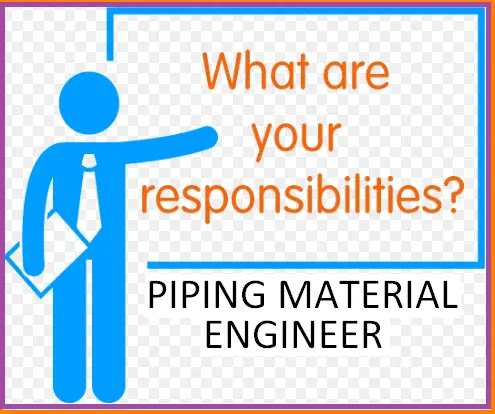
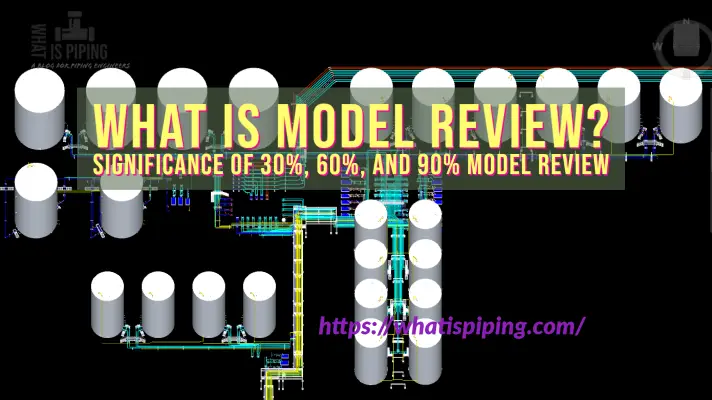


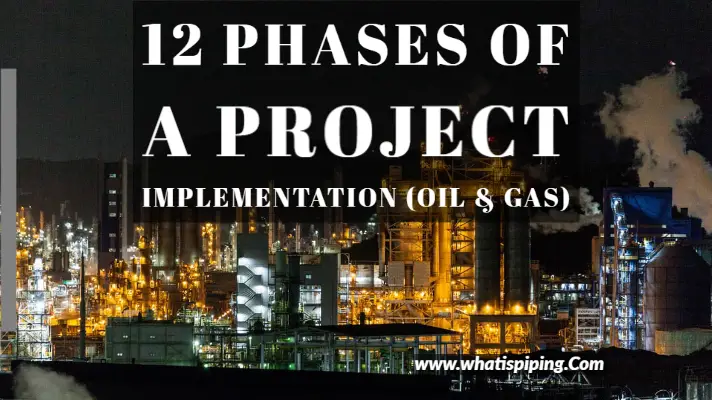
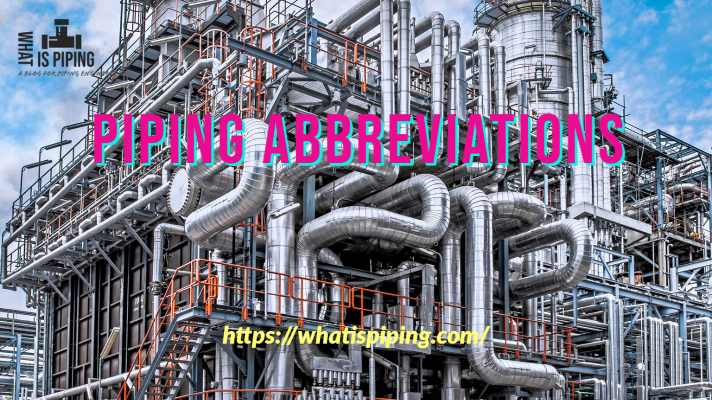
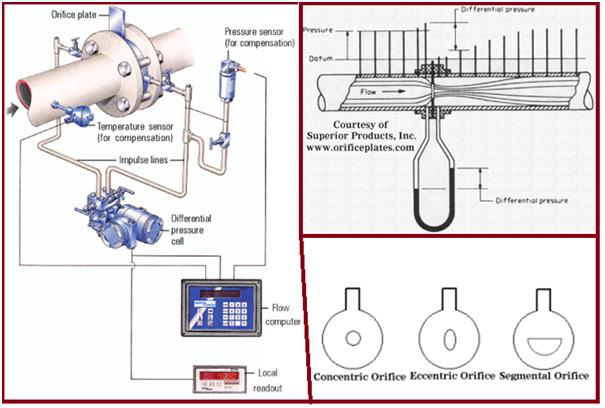
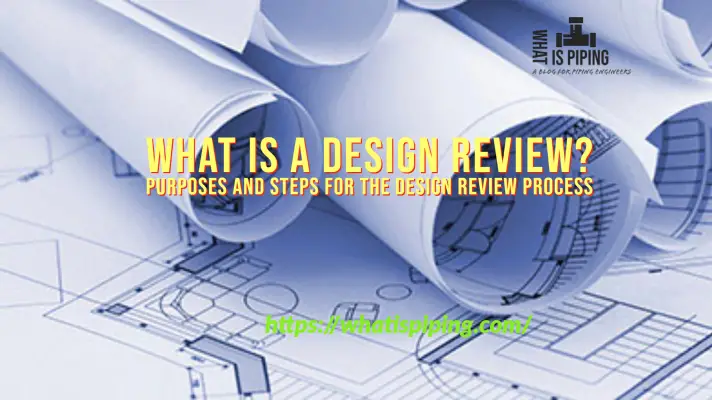
Would you like to share soft copy for the same I’d.
This is very useful! I’m happy I spotted your post because it’s better than similar posts I’ve read from everyone else about this subject. Can I ask you to clarify some things? Maybe give another example? Thank you!
Dear sir
You are great
With respect to you. I am graduate engineer (degree) & 12 Years experience Oil & Gas different plants in Gulf countries Static & Rotating Project engineer Piping Commissioning activities Mechanical Completion and Maintenance etc
Please email any Situable job regarding my profile
Thanks
Mohammad Mohsin
These are some great idea about the vendor offer review and tbe vendor drawing review that you have discussed here. I really loved it and thank you very much for sharing this with us. You have a great visualization and you have really presented this content in a really good manner.
If I want to Add torque calculation table in the aTBE how do i add that?
These are some great information that you have shared here vendor offer review tbe vendor drawing review. I really loved it and thank you very much for sharing this with us. You have a great visualization and you have really presented this content in a really good manner.
These are some great vendor offer reviews TBE vendor drawing reviews that you have discussed here. I really loved it and thank you very much for sharing this with us. You have a great visualization and you have really presented this content in a really good manner.
I loved your blog and thanks for publishing this about vendor offer review tbe vendor drawing review! I am really happy to come across this exceptionally well-written content. Thanks for sharing and look for more in the future!! Keep doing this inspirational work and share it with us.